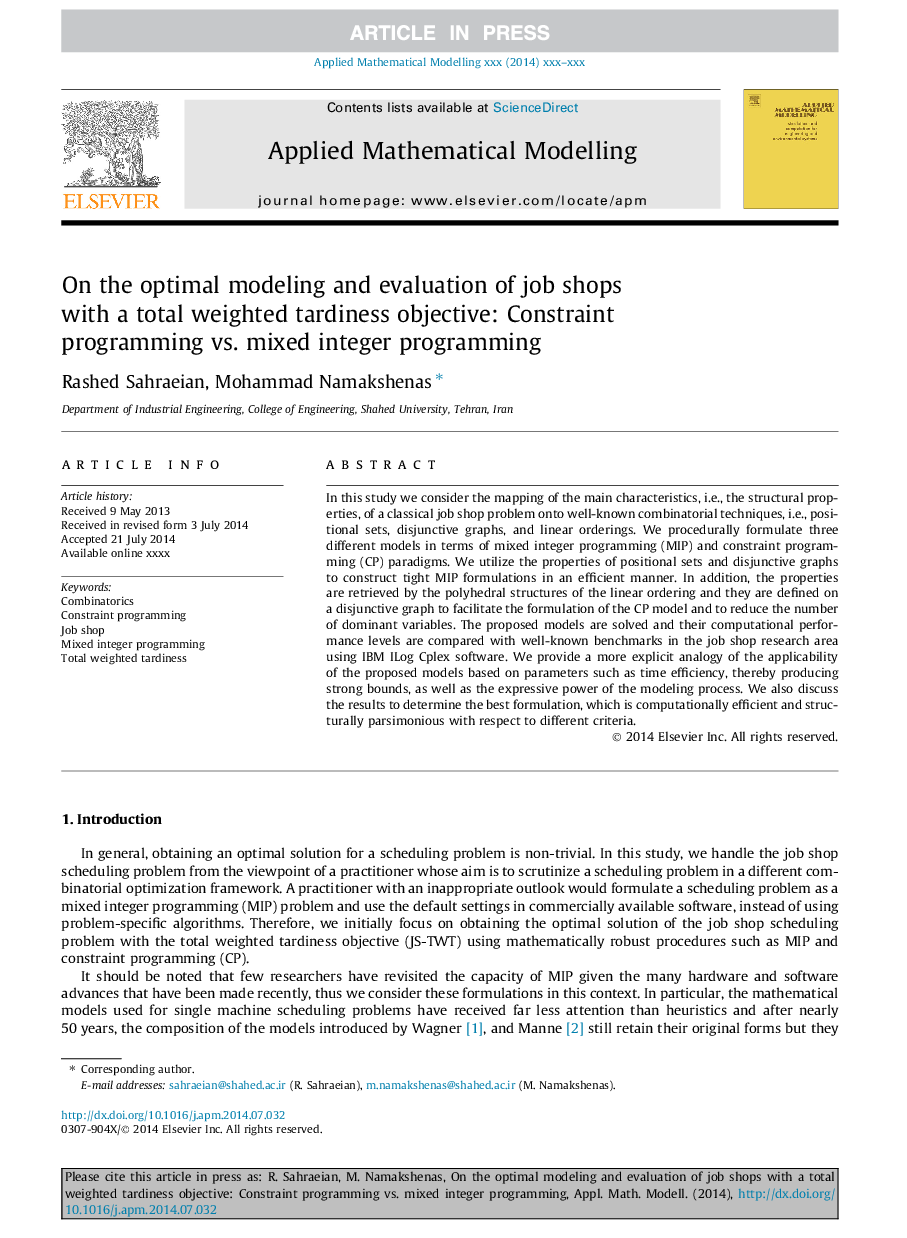| Article ID | Journal | Published Year | Pages | File Type |
|---|---|---|---|---|
| 10677753 | Applied Mathematical Modelling | 2015 | 10 Pages |
Abstract
In this study we consider the mapping of the main characteristics, i.e., the structural properties, of a classical job shop problem onto well-known combinatorial techniques, i.e., positional sets, disjunctive graphs, and linear orderings. We procedurally formulate three different models in terms of mixed integer programming (MIP) and constraint programming (CP) paradigms. We utilize the properties of positional sets and disjunctive graphs to construct tight MIP formulations in an efficient manner. In addition, the properties are retrieved by the polyhedral structures of the linear ordering and they are defined on a disjunctive graph to facilitate the formulation of the CP model and to reduce the number of dominant variables. The proposed models are solved and their computational performance levels are compared with well-known benchmarks in the job shop research area using IBM ILog Cplex software. We provide a more explicit analogy of the applicability of the proposed models based on parameters such as time efficiency, thereby producing strong bounds, as well as the expressive power of the modeling process. We also discuss the results to determine the best formulation, which is computationally efficient and structurally parsimonious with respect to different criteria.
Keywords
Related Topics
Physical Sciences and Engineering
Engineering
Computational Mechanics
Authors
Rashed Sahraeian, Mohammad Namakshenas,
